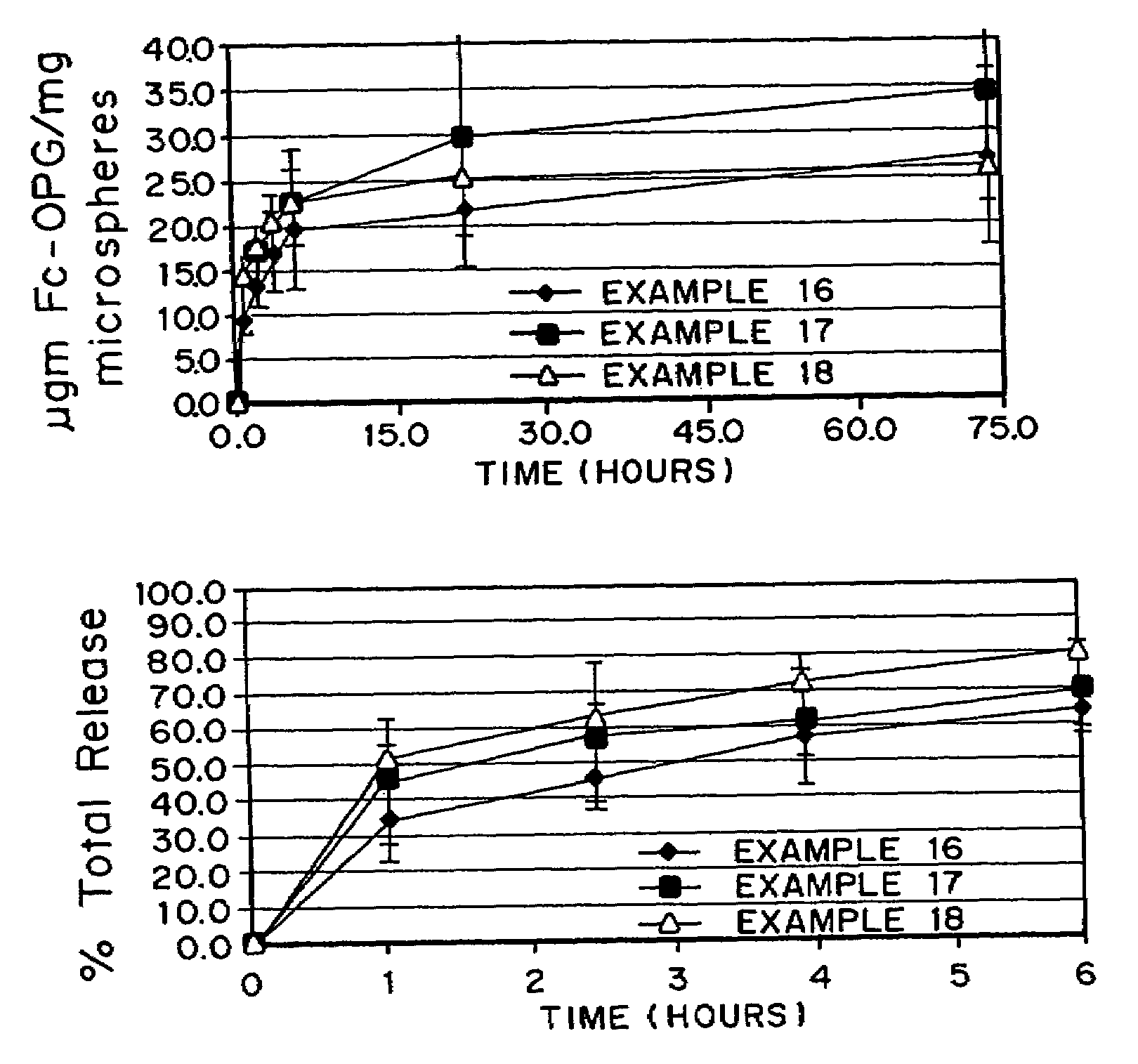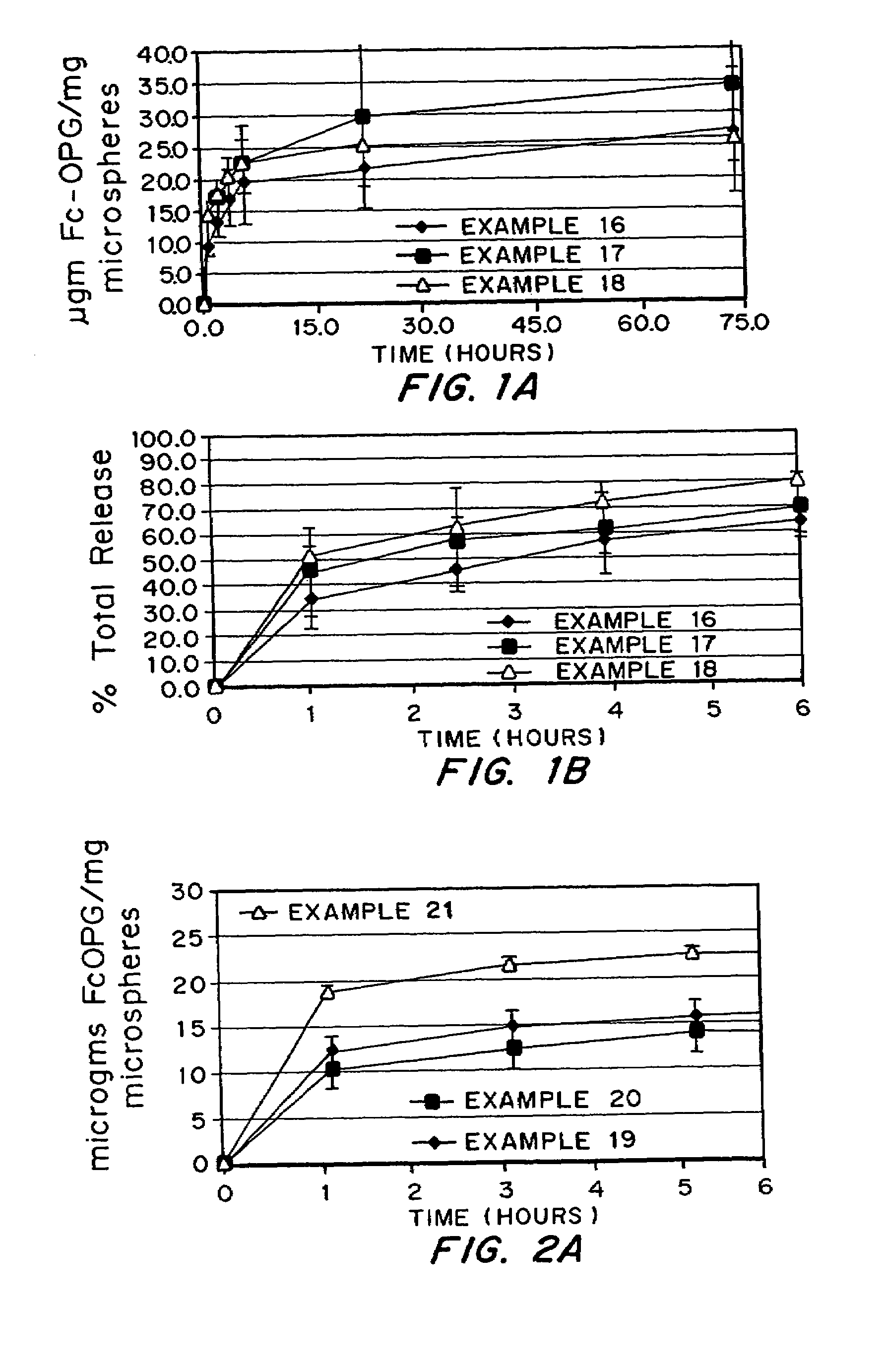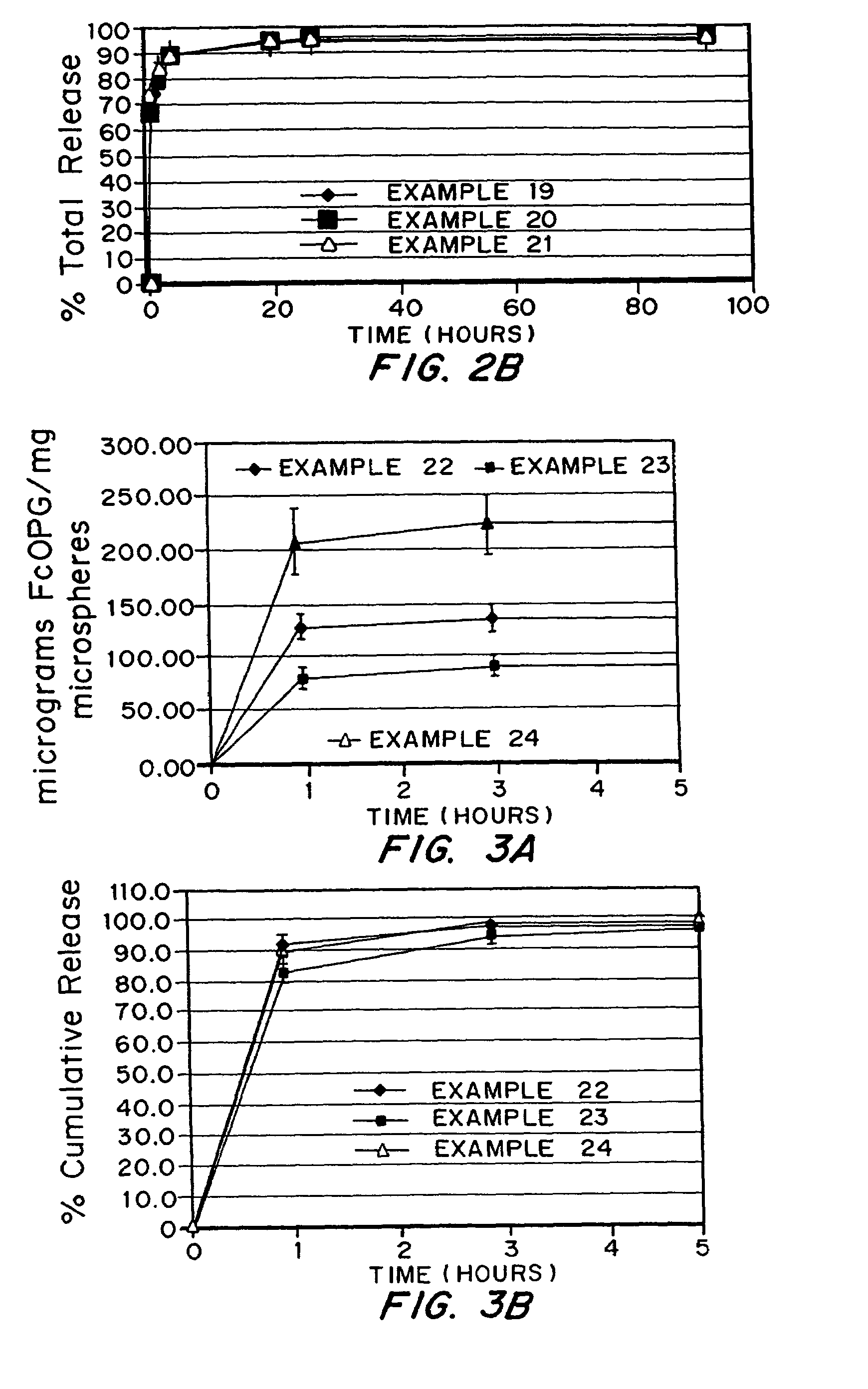Micronized freeze-dried particles
- Summary
- Abstract
- Description
- Claims
- Application Information
AI Technical Summary
Benefits of technology
Problems solved by technology
Method used
Image
Examples
example 1
Stabilization of Protein in Initial Emulsion in FLM Matrix with Lecithin and SPAN™ 85
[0101]This experiment investigated the factors that were important in obtaining a small (less than 5 μm) primary emulsion size during the first step of FLM, prior to freezing. As a test protein, bovine serum albumin (BSA), covalently labeled with the fluorescent label, fluroescein isothiocyanate (FITC) was used as a 10 mg / ml solution in 0.2 M sodium phosphate, pH 7.6. In some cases, the protein solution was diluted 1:1 (final BSA concentration: 5 mg / ml) with 10% mannitol (w / v) to test the effect of the mannitol on stabilizing the emulsion.
[0102]The polymer solution used was poly-lactide-co-glycolide (PLGA) in 50:50 molar ratio (MW=12 kDA, RG 502H, Boehringer Ingelheim) dissolved in methylene chloride (“MC”) at a concentration of 3 or 6% (w / v). Additionally two surfactants were tested for their ability to stabilize and reduce the primary emulsion size: SPAN™ 85 as a 1% (v / v) solution in methylene chl...
example 2
FLM and PIN of Insulin
[0106]FLM Procedure
[0107]In this formulation, 1.176 g PLGA 50:50 RG 502 H was dissolved in 28 ml of methylene chloride, yielding a 3.09% w / v solution of the base polymer. Then, 0.1198 g of Fe3O4 (5.2% w / w of the total) was blended, and 0.5880 g of fimaric acid prepolymer (“FAO”) was dissolved in 10 ml of acetone and blended at a loading of 25.6% w / w of the total. Bovine zinc insulin (USB Amersham) was dispersed into the mixture by adding 36.2 ml of 13.6 mg / ml zinc insulin in 0.01 N HCl to 38 ml of the polymer solution. The mixture was vigorously hand-shaken for 1 min., vortexed for 30 s, and then probe sonicated for 1 min. at 28% amplitude with a microtip. The emulsion was immediately frozen in liquid nitrogen for 5 min. and lyophilized for 46 hours. The resulting composition of the dry solids is shown in Table 2.
[0108]
TABLE 2Composition Resulting from FLMComponent% of Total (w / w)PLGA RG 502 H51.2%Zinc Insulin18.0%FAO25.6%Fe3O45.2%Total100.0%
[0109]Phase Inversi...
example 3
FLM and PIN of Insulin
[0119]FLM Procedure
[0120]In this formulation, 1.176 g PLGA 50:50 RG 502 H was dissolved in 28 ml of methylene chloride, yielding a 3.79% w / v solution of the base polymer. Then, 0.1198 g of Fe3O4 (5.2% w / w of the total) was blended. Next, 0.5880 g of FAO was dissolved in 3 ml of acetone and blended at a loading of 25.6% w / w of the total. Bovine zinc insulin (GIBCO) was then dispersed into the mixture by adding 56.1 ml of 7.36 mg / ml zinc insulin in 0.005 N HCI to 31 ml of polymer solution. The mixture was vortexed for 20 s and probe sonicated for 1 min. at 38% amplitude with a microtip. The emulsion was immediately frozen in liquid nitrogen for 5 min. and lyophilized for 69 hours. The resulting composition of the dry solids is shown in Table 4.
[0121]
TABLE 4Composition Resulting from FLMComponent% of Total (w / w)PLGA RG 502 H51.2%Zinc Insulin18.0%FAO25.6%Fe3O45.2%Total100.0%
[0122]Phase Inversion Nanoencapsulation
[0123]The resulting dry solids were resuspended in 43...
PUM
| Property | Measurement | Unit |
|---|---|---|
| Size distribution | aaaaa | aaaaa |
| Size distribution | aaaaa | aaaaa |
| Fraction | aaaaa | aaaaa |
Abstract
Description
Claims
Application Information
 Login to View More
Login to View More - R&D
- Intellectual Property
- Life Sciences
- Materials
- Tech Scout
- Unparalleled Data Quality
- Higher Quality Content
- 60% Fewer Hallucinations
Browse by: Latest US Patents, China's latest patents, Technical Efficacy Thesaurus, Application Domain, Technology Topic, Popular Technical Reports.
© 2025 PatSnap. All rights reserved.Legal|Privacy policy|Modern Slavery Act Transparency Statement|Sitemap|About US| Contact US: help@patsnap.com



